My copy was printed in 1976, I bought it from the Stars and Stripes bookstore in Frankfurt Germany where my Dad was stationed at.
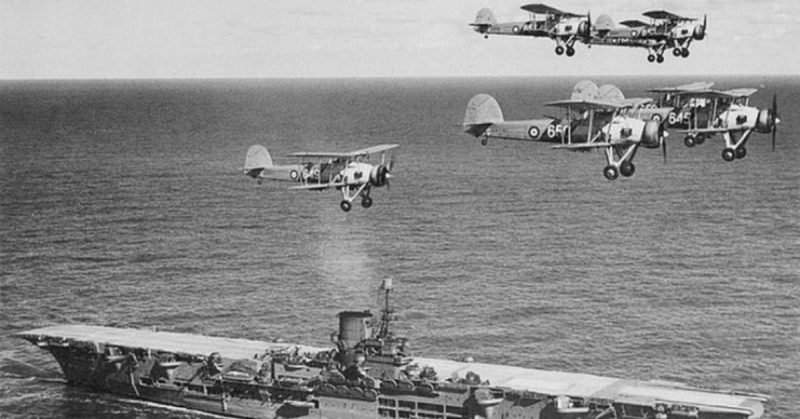
It is tempting to think that these types of airplane – the biggest, fastest, most powerful, most technologically advanced models – were solely responsible for winning the air war.
However, in focusing entirely on the flashiest, most impressive planes, it’s easy to lose sight of the plainer, simpler and smaller aircraft that played an equally important role in the Allied victory. One of these models was the Fairey Swordfish, nicknamed the “Stringbag,” a basic torpedo bomber biplane used extensively by the Fleet Air Arm of the Royal Navy during WWII.
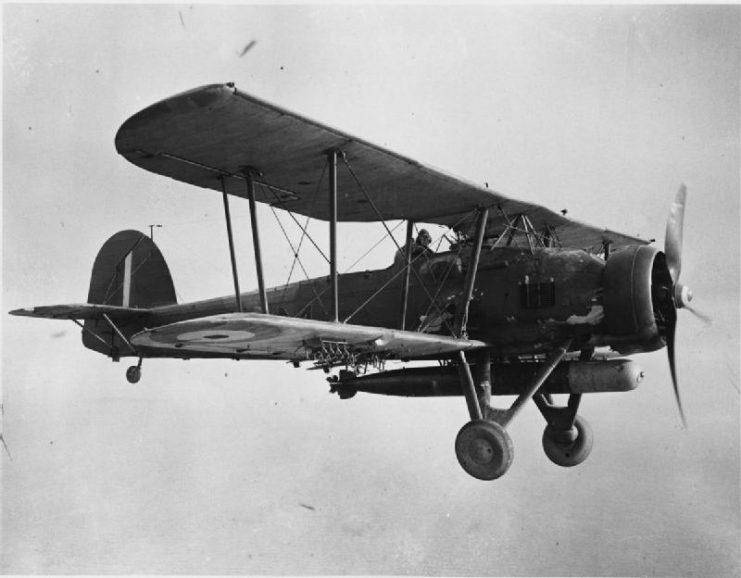
Stringbags also relentlessly harried the Axis shipping fleet in the Mediterranean, accounting for over a million tons sunk by the end of the war – not a bad tally for an outdated biplane!
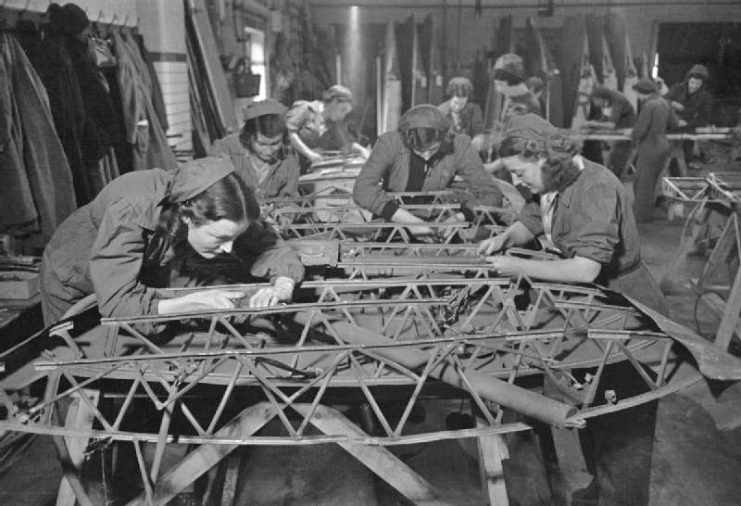
However, despite its outdated design, it was no less important to the Allied war effort than its more technologically-advanced compatriots. Indeed, the Swordfish’s antiquated appearance was deceptive – not so much in terms of its flat-out performance, but rather in terms of the roles it was able to perform.
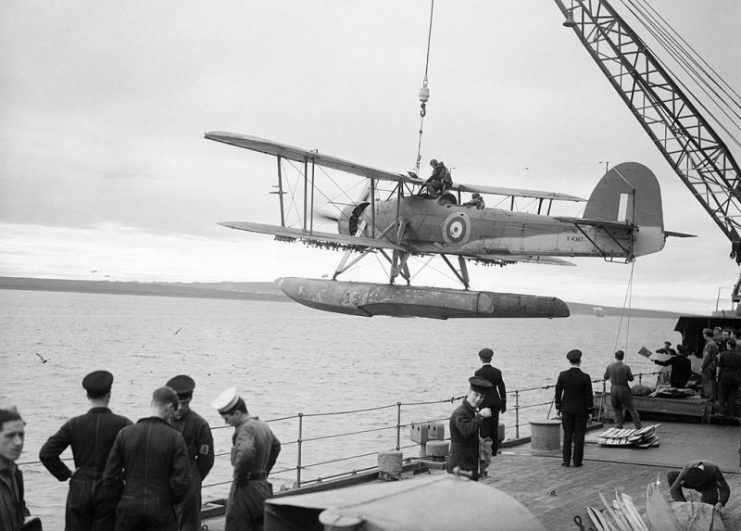
The plane was also used for a variety of roles, including reconnaissance, bombing, escort duty, or naval artillery spotting.
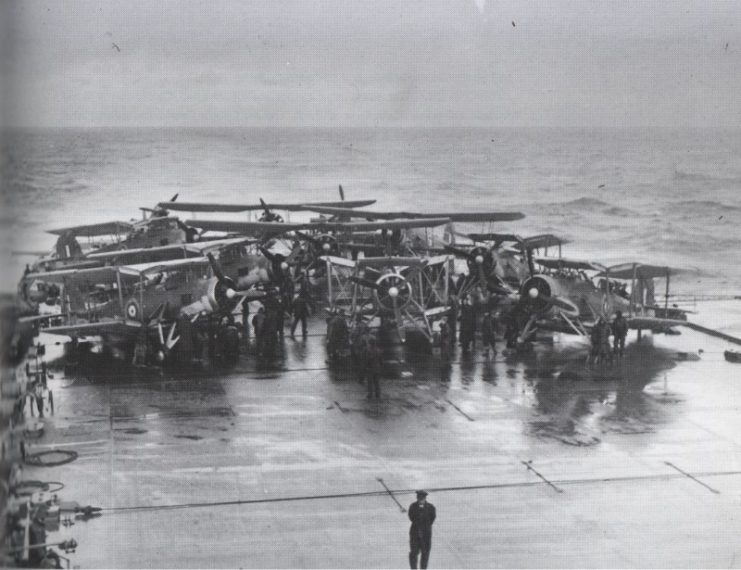
Because of the variety of ordnance the Swordfish could carry and the diversity of its roles, it was given the nickname “Stringbag,” likening the plane to a popular style in women’s handbags at the time. Humorous as it was, the nickname was apt and it stuck.
As a basic three-seater biplane with a simple Bristol Pegasus motor that cranked out 690-odd horsepower, the Stringbag wasn’t going to be breaking any speed records in the air. However, the simple design meant that maintenance of the aircraft was easy, and that the planes were reliable.
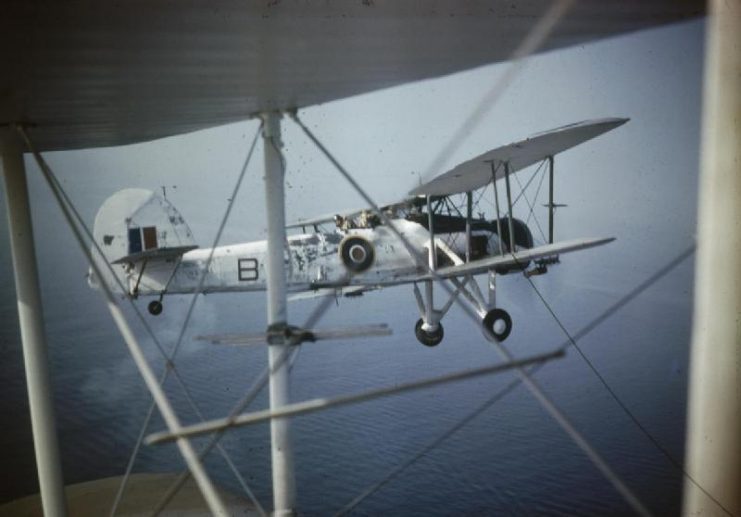
Stringbags were also extraordinarily maneuverable, making up for their slow speed with excellent agility. Their fabric-covered, all-metal under-structures were sturdy enough to deal with harsh landings, and this meant that they were ideal for night use – an excellent advantage, when they could fly all but invisible to Axis ships or other targets below.
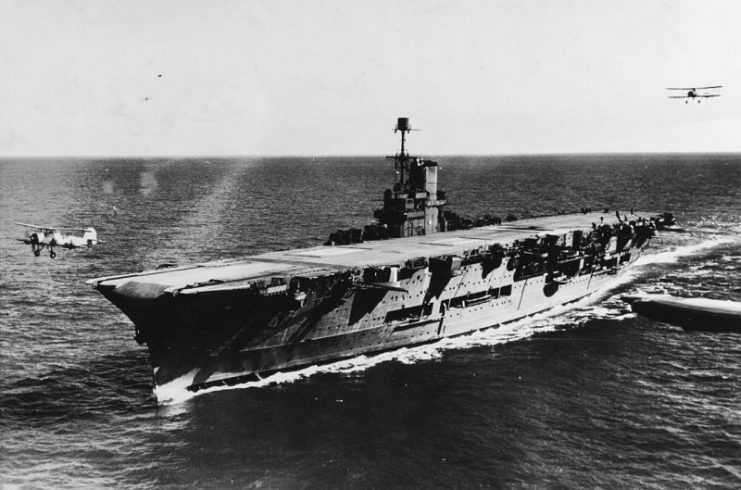
These planes weren’t without their disadvantages, of course. They were at a severe disadvantage when it came to air-to-air combat against Axis fighter planes, and the open cockpit meant that the men in the plane would suffer immensely in the cold. Early in the war, Stringbags didn’t have communication radios, so they had to rely on hand-held signalling devices.
Nonetheless their advantages generally outweighed their disadvantages, and Stringbags saw extensive use throughout the war. In one of the most famous incidents in which they were involved, a Stringbag was instrumental in the sinking of one of the Kriegsmarine’s mightiest ships, the battleship Bismarck.
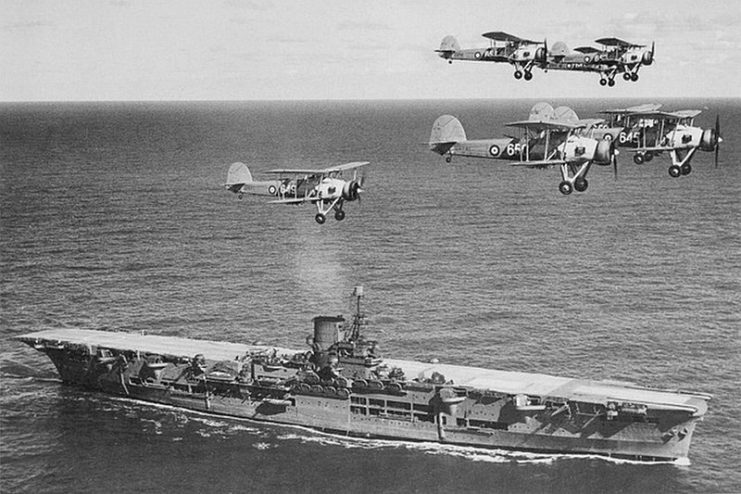
Realizing the Bismarck had to be stopped, Britain launched a pursuit, but the Bismarck managed to evade her pursuers. The only ship close enough to have a chance of disabling the giant was HMS Ark Royal, which had a few Stringbags equipped with torpedoes aboard. The Stringbags took off an hour before sunset on May 26, 1941 to take on the German behemoth.
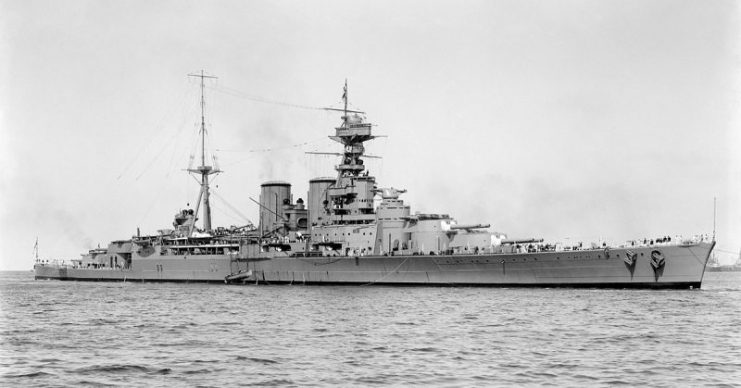
H.M.S. Hood
Moffat and his observer, Flight Lieutenant JD Miller, had to time the release of their torpedo with extreme precision. They only had one chance to do this, and if they missed or the torpedo hit the crest of a wave in the extremely choppy sea, it was mission over. With flak flying all around them, and Miller waiting for the exact moment, Moffat’s hands were surely sweating on those controls.
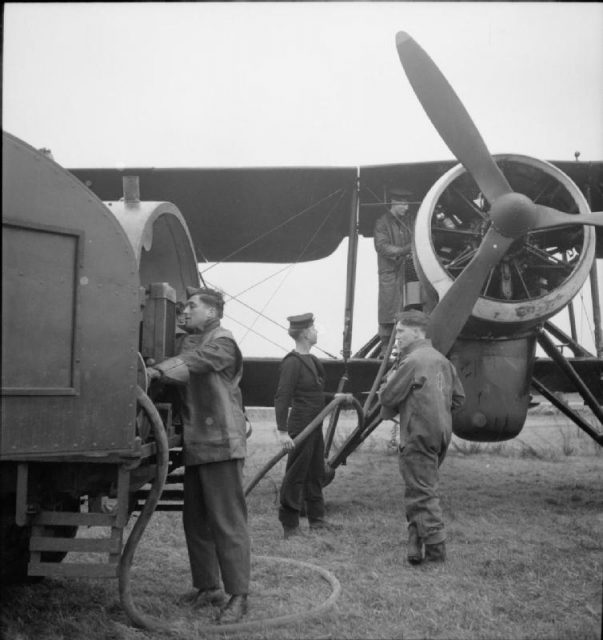
With her rudder jammed to port, and thus unable to move in anything but endless circles, the Bismarck became a sitting duck. British naval ships later surrounded the Bismarck and eventually sank her after extensive bombardment.
Stringbags also played a key role in the night attack on Italy’s Taranto naval base. Two waves of Stringbags launched a surprise attack on the naval base on the night of November 11, 1940, and succeeded in destroying or disabling the bulk of Italy’s naval fleet – an attack that would be carefully studied by the Japanese, who would use similar tactics to attack Pearl Harbor.
Stringbags also saw extensive use in taking out Axis shipping lines, especially in the Mediterranean, where they sunk over a million tons throughout the war. All in all, this humble airplane proved its worth to the British Royal Navy many times over during the course of WWII.

The Swordfish was a unique plane , and managed to accomplish some near miracles despot it's shortcomings , of which there were many .
ReplyDeleteThe torpedo hit that jammed Bismarck's rudder made it a legend , but, don't forget , it was ( as are many things in war ) a matter of luck, in addition to the skill and bravery of the British aviators ( and the terrible antiaircraft capability of the Bismarck).
That said , it's unlikely that any other carrier aircraft other than the Swordfish could have flown sorties off the Ark Royal in such appaling weather conditions .
And don't forget , not long afterwards, the Swordfish attempting to attack Scharnhorst and Gneisenau during their Channel Dash were massacred by the escorting Bf-109s .
Hey JerseyGirlAngie;
DeleteYou are correct, the Swordfish was old technology, the AA directors on the Bismark couldn't track the plane because it was so slow. Also its design and low take off speed helped it take off in bad weather. The Fairey Swordfish became legendary and they were replaced with Lend Lease Avengers from the United States. The plane was there at the right place and the right time and became legendary unlike some of the other Prewar British airplanes like the Vickers Wellington. Thank you for stopping by :)
Sort of analagous to the A-1 Skyraider - obsolescent technology , hopelessly slow by "modern" standards , but able to fly missions no other aircraft could .
ReplyDeleteThe Wellington wasn't a bad plane - certainly it was better than it's contemporaries, the Whitley, the Hampden, and the unfortunate Battle . Early in the war , it formed the bulk of Bomber Command until the Lancasters and Halifaxs started being produced in numbers . If anything , it had a better career than the more modern Stirling - but you're quite right, it never achieved legendary status .
Hey JerseyGirlAngie;
DeleteThe "Spad" did exemplify that as did the B26K. The British had hits like the Spitfire,Hurricane, and the Mosquito and some "duds", airplanes that didn't work "as advertised". In the 1930's the British were trying to rearm because they saw what was going on in Germany and were concerned but with the "pacifist" movement combined with the great depression, they didn't have the money like they wanted. Also with the great advancement in airplane technology almost as soon as an airplane was in production it was bordering on obsolescence. I will use an American example The TBD "Devastator" torpedo bomber, it was the first monoplane torpedo plane developed in the mid 1930's and was cutting edge, but by the start of WWII after Pearl Harbor the plane was slow and cumbersome and easy prey to the fighters as Midway demonstrated.